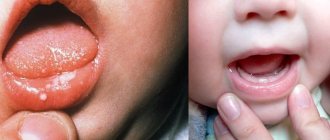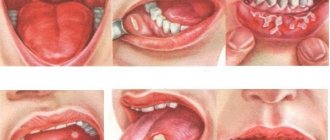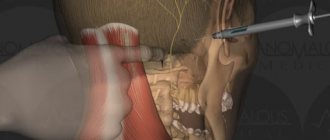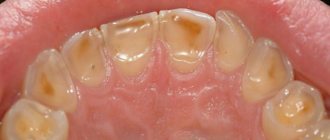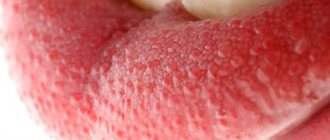“Three-day fever”, “summer flu”, “Boston fever”, “Turkish chickenpox” are just a few names for the Coxsackie virus. This heat-loving infection, contrary to popular belief, can ruin summer holidays not only on the Turkish coast. Infection with this disease is recorded annually, in addition to Turkey, in Greece, Spain, Bulgaria and even on the Black Sea coast of Russia. Is there any way to protect yourself from this infection? Who is at risk, who does the virus “choose” first? And how to treat if you are already infected?
- Symptoms of the coxsackie virus in children
- What products are recommended for patients?
- Is it possible to use Viferon for coxsackie?
- What antiviral drugs can be taken for prevention?
Every year, starting from 2022, Rospotrebnadzor issues leaflets for tourists planning to spend a summer holiday at sea in warm countries, which talk about the dangers of the virus, as well as some resort places where the likelihood of infection is especially high.
People traditionally go to the sea with whole families with small children to relax and improve their health, and instead of the gentle sea and beach they risk spending time isolated in a hospital bed. So what do you need to know about the virus to avoid getting sick, and if you do get sick, how to treat it to avoid dangerous complications?
Symptoms of the coxsackie virus in children
What is usually called the Coxsackie virus is actually a group of enteroviruses (29 strains) that enter the human body through the oral mucosa and then, reaching the intestines, begin to actively multiply there. The symptoms of the disease are very similar to chickenpox, which is why it is often called “Turkish chickenpox.” But there are also differences: in adults the disease is less severe than in children. Children, due to their underdeveloped immune system, are the easiest prey for the virus. In severe form, the disease can affect the nervous system, including the brain, as well as disrupt the functioning of the heart and affect changes in the muscle tissue of this organ, and negatively affect the liver.
The virus is extremely stable in the external environment and is perfectly preserved in the aquatic environment (drinking water from fountains, ice from raw water, swimming pools). You can also become infected with the virus through airborne droplets (from one person to another), contact (toys in the children's room, swimming in the pool) and food (through dirty dishes, unwashed vegetables and fruits, water). The contagiousness (infectiousness) of the virus is almost 100%. That is, if one child in the playroom gets sick, after a couple of days everyone who came into contact with him will feel unwell, including adults. Only in adults the disease can pass almost unnoticed; many tourists do not even realize that they are sick, attributing the malaise to fatigue or overheating on the beach, since they already have an established immune system. But if a person has reduced body resistance, then you cannot do without a doctor. So what symptoms indicate this enterovirus infection?
Symptoms in the initial stage of the disease:
- Intoxication, which is often indicated by a brown or yellowish coating on the tongue;
- High temperature up to 39-40ºС, against this background convulsions are possible;
- Headache, weakness and drowsiness, aches throughout the body;
- Loss of appetite, nausea, vomiting;
- Redness in the throat, enlarged submandibular lymph nodes.
Rash period: mouth-hand-foot syndrome
- After 1-2 days, watery blisters with a diameter of about 2 mm form on the inner surface of the cheeks and lips, and around the outside of the mouth. They open themselves, which leads to the formation of ulcers.
- Simultaneously with the rashes in the mouth, the same blisters appear on the skin of the palms and soles. The rash may also appear on other parts of the body.
Recovery period
After 5 days, the immune system begins to produce antibodies. The temperature drops, the general condition of the child gradually improves. The recovery period lasts 5-7 days: ulcers on the mucous membrane heal, appetite returns. On average, the disease lasts 10 days. However, if the child’s immunity is weakened, the virus remains in the nervous tissue and periodically causes relapses of diseases: for example, serous meningitis, herpetic sore throat, conjunctivitis, viral heart disease, and so on.
Victor Borisovich, when does the danger of enterovirus infection most often arise?
Today, enterovirus infection is one of the most pressing infectious problems in St. Petersburg.
The incidence rate increases in summer and autumn, when it is warm enough outside. The infection is relevant primarily for children. It is most often transmitted by water and airborne droplets. And very often, both adults and children bring the infection from the southern regions. Many remember the outbreak in Turkey last year, and in St. Petersburg there are still isolated cases of infection to this day.
Very often problems arise with differential diagnosis. We must understand that the group of enteroviruses is very large; it includes many enteroviruses themselves, viruses of the ECHO group and the Coxsackie group. Often these three types of viruses can cause an infectious disease in combination. Because of this, there is no specific form of the disease that manifests itself in the same way in everyone; the symptoms are mixed.
What antiviral agents for Coxsackie virus are recommended for patients (at the INN level)
For any disease, comprehensive treatment under the supervision of a doctor is necessary. And enterovirus infection is no exception. As a rule, when characteristic signs of the disease are detected in a small patient, both antiviral antiviral and symptomatic treatment is prescribed. Among antiviral drugs, drugs containing interferon are used. Such drugs include Viferon Suppositories.
Suppositories containing human interferon do not give the virus a head start of several days until the body itself begins to fight the infection, but begins to act immediately, thereby reducing the recovery time. For symptomatic treatment, the following is used:
- Antipyretic syrups or suppositories containing paracetamol or ibuprofen.
- To avoid dehydration and alleviate the symptoms of intoxication, you should drink plenty of water (boiled or bottled), water with lemon;
- For diarrhea, it is advisable to take absorbent agents, such as activated carbon;
- To relieve pain in the mouth, you can use gels used for teething in babies.
- To speed up healing and prevent infection of mouth ulcers, antibacterial sprays are used;
- Although the rash usually does not cause itching in children (unlike chickenpox), if it bothers the baby, antihistamines can be used.
Pathogenesis
For Coxsackievirus A and B, the entry gates are the mucous membranes of the oral cavity, upper respiratory tract and intestines. Enteroviruses freely overcome the “gastric barrier” and penetrate the cells of the small intestinal mucosa. Subsequently, the process of virus replication occurs in the cells of the intestinal epithelium, lymphoid tissue and mesenteric lymph nodes. The virus then enters the bloodstream and causes primary viremia. The Coxsackie virus exhibits the greatest tropism for cells of the central nervous system/muscle tissue, but a variety of organs are also involved in the pathological process.
Dissemination of the pathogen occurs in the heart, liver, lungs, kidneys, eye vessels, pancreas, where it multiplies and accumulates. Clinical symptoms, severity and outcome of the disease are determined by a number of factors - the biological properties of the virus serotypes, their tropism, the state of the humoral/cellular immunity of the human body. Swelling, inflammation and areas of necrosis develop in the affected organs.
The stages of pathogenesis are shown schematically in the figure:
Stages of pathogenesis of the Coxsackie virus
Persons who have recovered from the disease develop long-lasting (over several years) type-specific immunity.
Is it possible to use Viferon for coxsackie?
According to the instructions, the drug is recommended for the treatment of enteroviral infections in complex therapy, including as an antiviral agent against the Coxsackie virus.
The recommended dose for newborns, including premature babies with a gestational age of more than 34 weeks, is VIFERON 150,000 IU daily, 1 suppository 2 times a day after 12 hours. The course of treatment is 5 days.
Premature newborns with a gestational age of less than 34 weeks are recommended to use the drug VIFERON 150,000 IU daily, 1 suppository 3 times a day after 8 hours. The course of treatment is 5 days. The recommended number of courses is from one to two with a break of 5 days.
Children under 7 years of age, daily 1 suppository of 150,000 IU 2 times a day with an interval of 12 hours for 5 days (if indicated, treatment can be continued with a break of 5 days).i
What kind of “beast” is this and where does it come from?
Enteroviruses are a genus of viruses, the name of which implies that their main site of introduction and reproduction is the gastrointestinal tract (from the Greek “entero-” - “associated with the intestines”).
Main two subgroups
- Coxsackie (named after the city of Coxsackie, USA, where it was discovered)
- ECHO (e-enteric, c-cytopathic, h-human, o-orfan, literally: enteric cytopathic orphan viruses, since they were not initially associated with the development of diseases). More than 60 serotypes of viruses are known, but not all are pathogenic.
Enteroviruses are ubiquitous. In countries with warm and humid climates, the incidence remains at the same level throughout the year. In Russia, the peak occurs at the end of summer and autumn, until the coldest weather. Children are more susceptible to infection, although adults can also get sick.
What antiviral drugs can children take to prevent coxsackie?
Usually, before traveling to resorts, questions arise about the prevention of a particular disease that is present in a hot climate, and against which people from other regions have no immunity. Of course, it would be great to give some antiviral drugs for children against Coxsackie to your child and then go on vacation in peace. But, unfortunately, as in the situation with the flu, there are no such drugs that 100 percent protect against infection. And there are two ways: either not to visit places with small children that are potentially dangerous for them in terms of infection, or to observe all possible precautions, first of all, personal hygiene and the hygiene of the child. Make sure that he does not touch his face and mouth with dirty hands, does not use other people’s things, including toys, and eats only clean, heat-treated water and only well-washed fruits. It is clear that in resort conditions, it is not always possible to wash your hands with soap, so it is worth stocking up on disinfectant gels that you can use to treat your hands. Also, as a preventive measure, antiviral drugs for Coxsackie can be used, which in the form of sprays, gels or ointments are applied to the nasal mucosa to avoid infection by airborne droplets.
Classification
There is no unified classification of enteroviruses due to the wide polymorphism of clinical symptoms. In the Russian Federation, a classification according to the type of disease has been adopted.
- Typical forms of enterovirus infection: herpangina , enteroviral fever , acute respiratory diseases, exanthema , epidemic myalgia , aseptic serous meningitis , encephalomyocarditis , hepatitis , myocarditis , mesadenitis , meningoencephalitis , gastroenteric form, hemorrhagic conjunctivitis , vesicular ny stomatitis .
- Atypical forms of enterovirus infection: erased, inapparent.
According to the current: light, medium and heavy.
conclusions
The lack of specific immunity makes almost every person vulnerable to diseases caused by pathogens of the enterovirus group. You should not treat “resort infections” irresponsibly; they often lead to serious complications. Most patients infected with the Coxsackie virus do not require hospitalization, have no negative consequences, and recover within 10-14 days. But children under 3 years of age are at high risk of developing dehydration, especially with vomiting and diarrhea. And if, nevertheless, a trip with a small child to the resort must take place, then the mother needs to take care of both additional hygiene products and the presence of a first aid kit with essential drugs in her luggage, so as not to run around local pharmacies in search of “antiviral drugs for coxsackie”. And, of course, when applying for insurance, you need to make sure that with this infection you can count on the help of a doctor, which is especially important if the disease suddenly causes complications.
Author of the article
Belyaev Dmitry Alexandrovich
General doctor
iExperience of using Viferon in complex therapy of serous meningitis of enteroviral etiology” / S. P. Kokoreva, A. M. Zemskov, N. P. Kuprina // Pediatrics. – 2002. – N 5. – P. 68-71. – ISSN 0031-403X
Loading...
Take other surveys
Herpangina
Herpangina has nothing to do with herpes, but the name was formed historically because the rash is similar to that of herpetic stomatitis.
Stages of the disease
- It begins with severe intoxication. Body temperature rises significantly - up to 41 degrees Celsius (the younger the child, the stronger the fever), headache, often abdominal pain and vomiting.
- The sore throat may be so severe that it makes swallowing difficult.
- Elements of the rash are located on the tonsils, soft palate and uvula, the back wall of the pharynx, and much less often on the cheeks or tongue.
- Similar to the first form - the blisters turn into painful ulcers surrounded by hyperemia. The recovery time in this case is the same.
Diet
Diet for influenza, ARVI, colds
- Efficacy: therapeutic effect after 4-7 days
- Terms: 5-12 days
- Cost of products: 1500-1600 rubles per week
A balanced dairy-vegetable diet with plenty of fluids. When treating enteroviral exanthems , foods that irritate the oral mucosa (fried foods, spices, pickles, citrus fruits, hot foods/drinks) are excluded from the diet.
